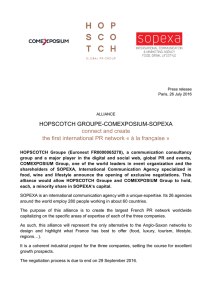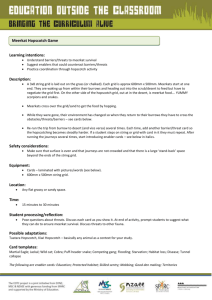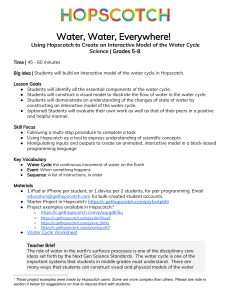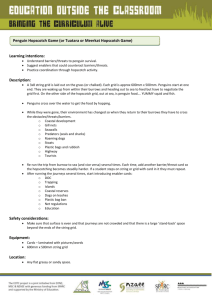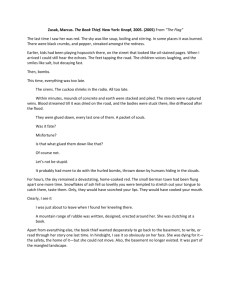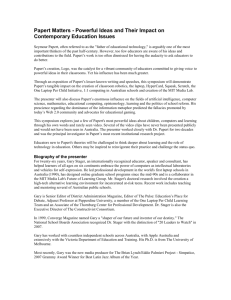2-page proposal file
advertisement
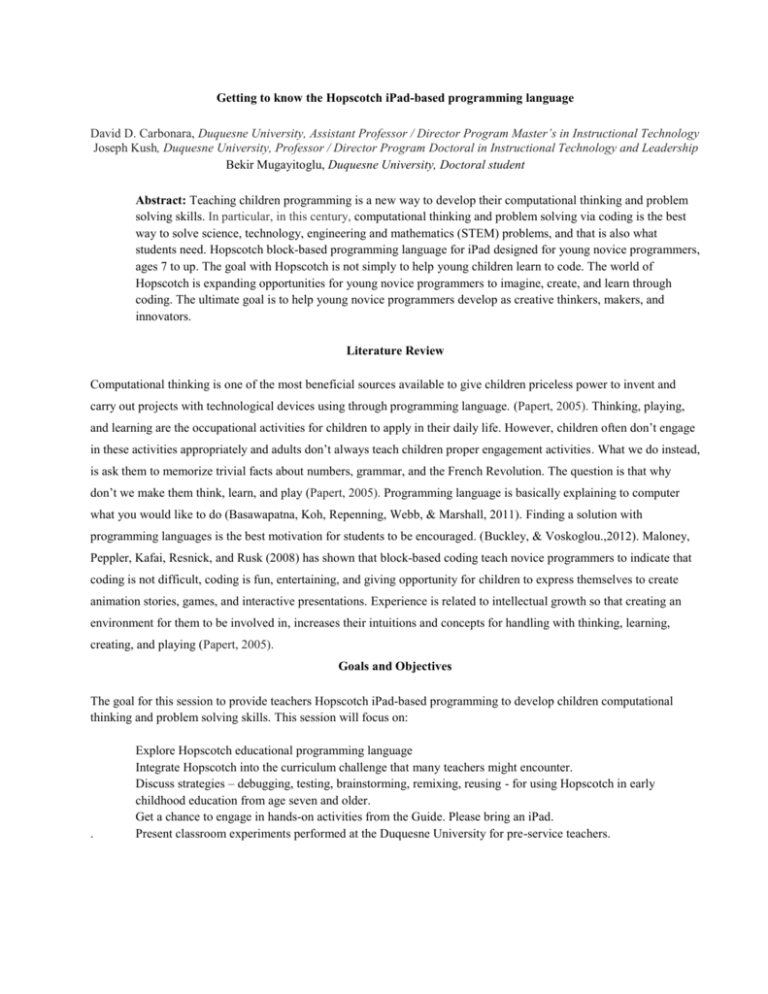
Getting to know the Hopscotch iPad-based programming language David D. Carbonara, Duquesne University, Assistant Professor / Director Program Master’s in Instructional Technology Joseph Kush, Duquesne University, Professor / Director Program Doctoral in Instructional Technology and Leadership Bekir Mugayitoglu, Duquesne University, Doctoral student Abstract: Teaching children programming is a new way to develop their computational thinking and problem solving skills. In particular, in this century, computational thinking and problem solving via coding is the best way to solve science, technology, engineering and mathematics (STEM) problems, and that is also what students need. Hopscotch block-based programming language for iPad designed for young novice programmers, ages 7 to up. The goal with Hopscotch is not simply to help young children learn to code. The world of Hopscotch is expanding opportunities for young novice programmers to imagine, create, and learn through coding. The ultimate goal is to help young novice programmers develop as creative thinkers, makers, and innovators. Literature Review Computational thinking is one of the most beneficial sources available to give children priceless power to invent and carry out projects with technological devices using through programming language. (Papert, 2005). Thinking, playing, and learning are the occupational activities for children to apply in their daily life. However, children often don’t engage in these activities appropriately and adults don’t always teach children proper engagement activities. What we do instead, is ask them to memorize trivial facts about numbers, grammar, and the French Revolution. The question is that why don’t we make them think, learn, and play (Papert, 2005). Programming language is basically explaining to computer what you would like to do (Basawapatna, Koh, Repenning, Webb, & Marshall, 2011). Finding a solution with programming languages is the best motivation for students to be encouraged. (Buckley, & Voskoglou.,2012). Maloney, Peppler, Kafai, Resnick, and Rusk (2008) has shown that block-based coding teach novice programmers to indicate that coding is not difficult, coding is fun, entertaining, and giving opportunity for children to express themselves to create animation stories, games, and interactive presentations. Experience is related to intellectual growth so that creating an environment for them to be involved in, increases their intuitions and concepts for handling with thinking, learning, creating, and playing (Papert, 2005). Goals and Objectives The goal for this session to provide teachers Hopscotch iPad-based programming to develop children computational thinking and problem solving skills. This session will focus on: . Explore Hopscotch educational programming language Integrate Hopscotch into the curriculum challenge that many teachers might encounter. Discuss strategies – debugging, testing, brainstorming, remixing, reusing - for using Hopscotch in early childhood education from age seven and older. Get a chance to engage in hands-on activities from the Guide. Please bring an iPad. Present classroom experiments performed at the Duquesne University for pre-service teachers. Description of Practice Participants who attend this session will know how to integrate educational programming language in classroom setting. They will also learn some strategies and activities – debugging, brainstorming, sharing and remixing by the Guide and what is the most beneficial way to encourage and motivate children programming language. Also, they will know what they need to do as teacher. Participant Interactivity The session will begin with a brief summarization of educational programming language. The interactivity will be guided by the introduction of various questions such as: What teachers need to know to teach children programming? How to help learners create, share, and learn iPad-based programming language? How to integrate iPad-based programming language into the classroom setting? Want to teach children programming language, but don’t you know how to start? References Basawapatna, A., Koh, K. H., Repenning, A., Webb, D. C., & Marshall, K. S. (2011). Recognizing computational thinking patterns. In Proceedings of the 42nd ACM Technical Symposium on Computer Science Education. New York: ACM Buckley, S.B; Voskoglou, M.G. (2012). Problem solving and computers in a learning environment. Egyptian Computer Science Journal 36(4). 28-46.Goral, T. (2011, January). Take II Tablets. University Business, 46-49. Grover, S. & Pea, R.D. (2013). Computational Thinking in K-12: A Review of the State of the Field. Educational Researcher. 42(1), 38-43. Maloney, J. H., Peppler, K., Kafai, Y., Resnick, M., & Rusk, N. (2008). Programming by choice: Urban youth learning programming with scratch. In Proceedings of the 39th SIGCSE Technical Symposium on Computer Science Education, Portland, OR, USA, March 12-15, 2008. SIGCSE ‘08 (pp. 367–371). New York: ACM. Papert, S. (2005). Teaching children thinking. Journal of structural learning,4(3), 219-230. Tickle, G. (n.d.). Code.org Says “Hello, World” to Get Everybody Coding. Retrieved 1 22, 2013, from http://www.geekosystem.com/code-dot-org-launch/
